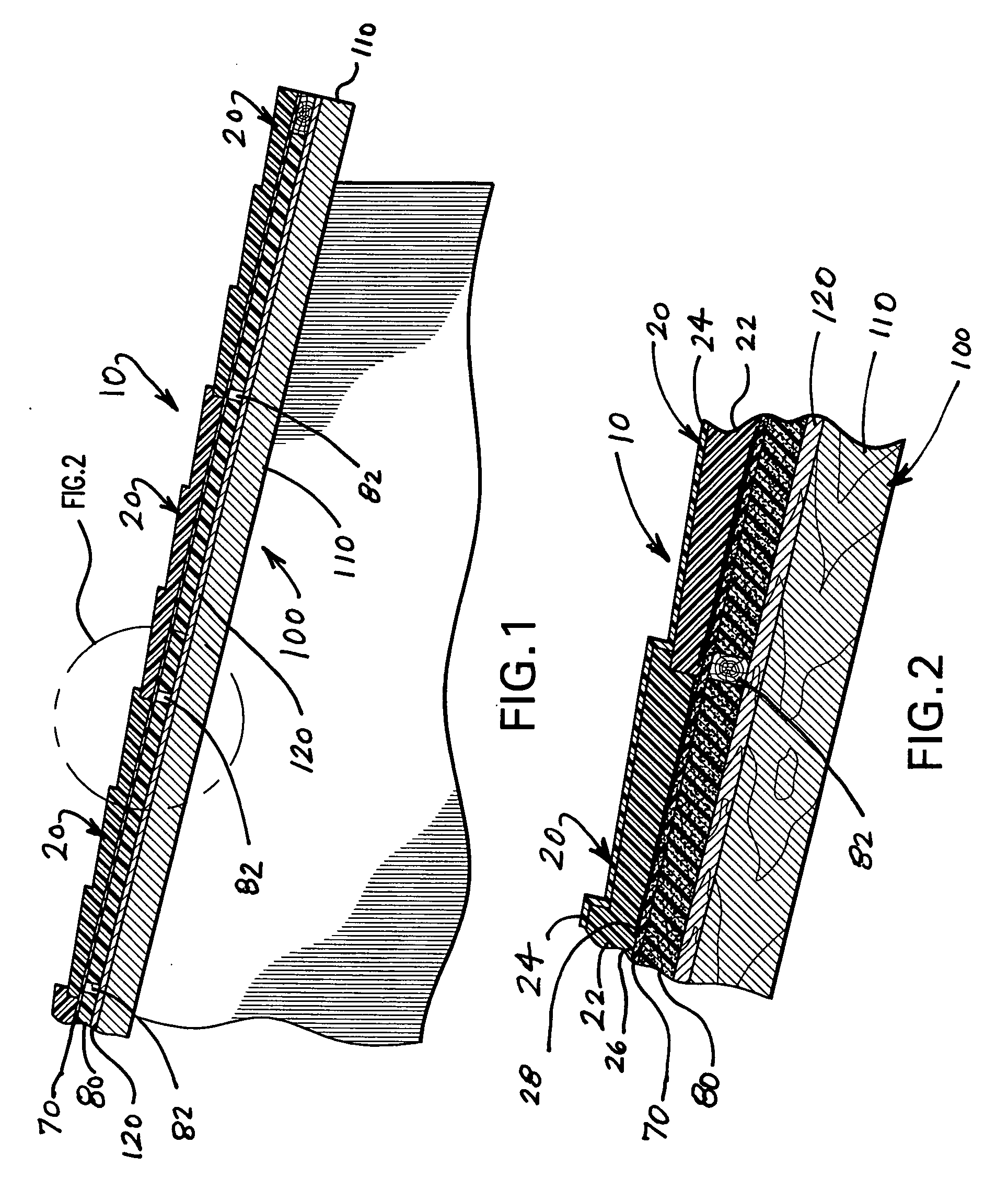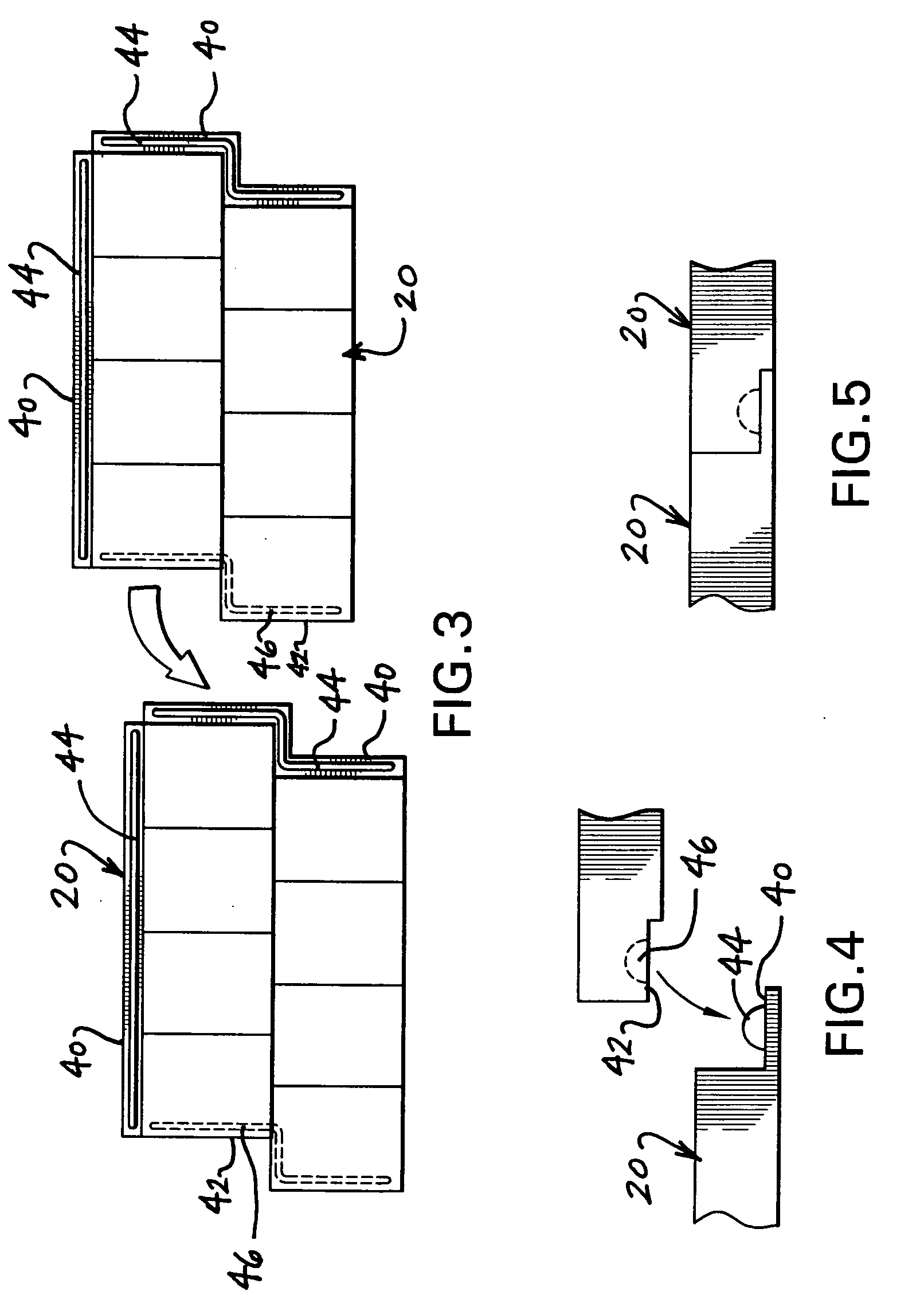Roof system and method of fabrication and installation
a technology of foam panel roof and fabrication method, which is applied in the direction of roof covering, floors, building components, etc., can solve the problems of compromising the watertight integrity affecting the performance of the roof system, so as to achieve exceptional insulating value, tremendous uplift strength, and resistance to high wind forces
- Summary
- Abstract
- Description
- Claims
- Application Information
AI Technical Summary
Problems solved by technology
Method used
Image
Examples
Embodiment Construction
[0033]The roof system of the present invention is shown throughout the several views of the drawings and is generally indicated as 10. The roof system 10 uses individual roofing panels 20 that are molded with a high density polyurethane foam or extruded polystyrene foam core 22. The panels 20 are molded in various sizes, shapes and configurations according to the desired aesthetic appearance of the roof. The molded panels 20 may also be formed as ridge caps, as well as other accessory components for fitting at unique intersections of the roof, terminations with walls, valleys, hips, ridges, etc. The foam core 22 of the roofing panels 20 provides exceptionally high insulating values well beyond that of conventional roofing tiles and shingles. During manufacture, a non-skid primer coat 24, such as a cement acrylic coating composition, is applied to the top surfaces and side edges of the molded panels. To enhance the adhesion characteristics, the bottom side 26 of the molded panels 20 ...
PUM
 Login to View More
Login to View More Abstract
Description
Claims
Application Information
 Login to View More
Login to View More - R&D
- Intellectual Property
- Life Sciences
- Materials
- Tech Scout
- Unparalleled Data Quality
- Higher Quality Content
- 60% Fewer Hallucinations
Browse by: Latest US Patents, China's latest patents, Technical Efficacy Thesaurus, Application Domain, Technology Topic, Popular Technical Reports.
© 2025 PatSnap. All rights reserved.Legal|Privacy policy|Modern Slavery Act Transparency Statement|Sitemap|About US| Contact US: help@patsnap.com



